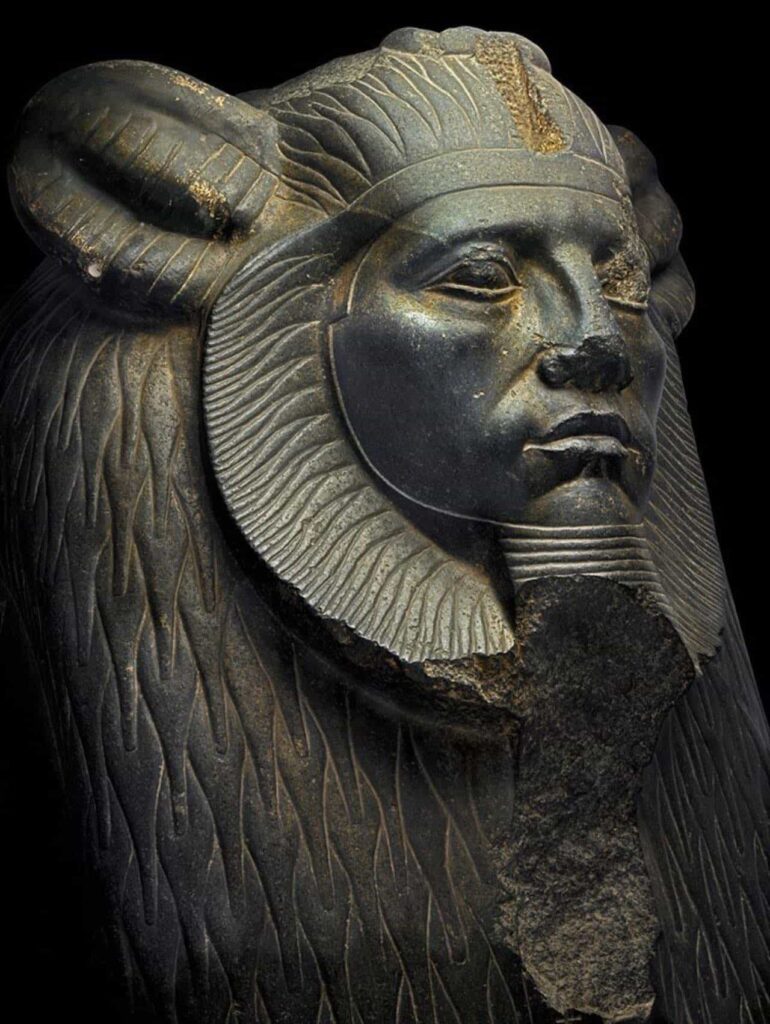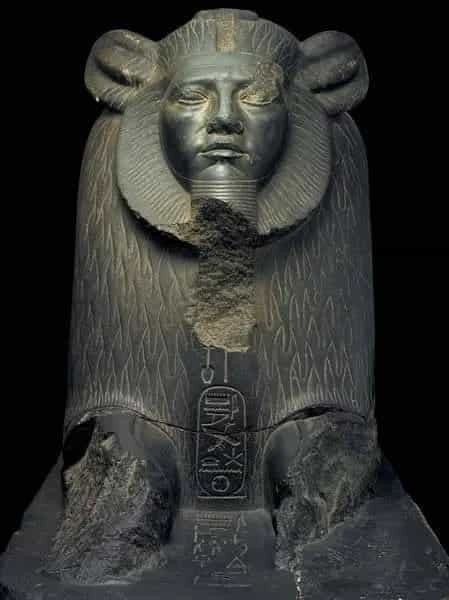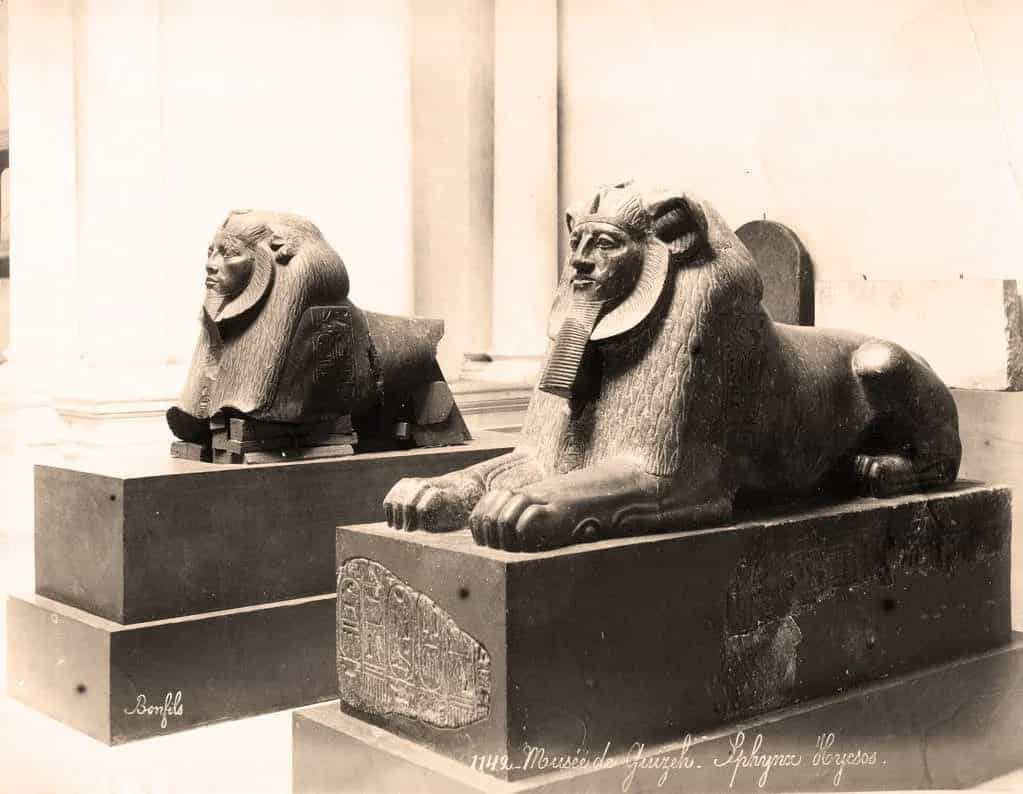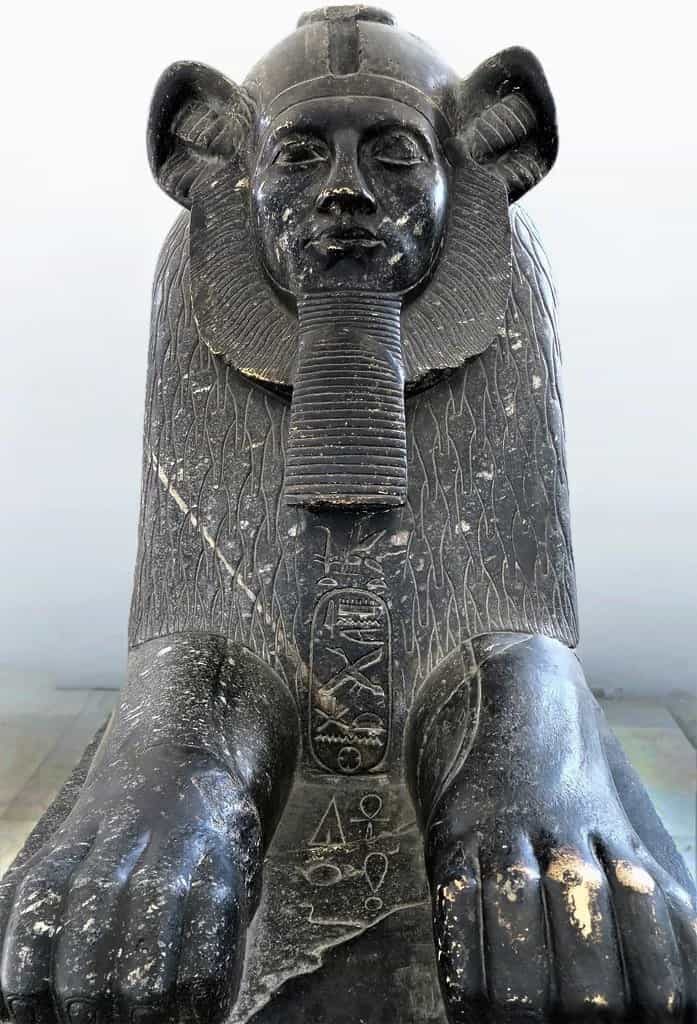Amenemhat III, son of Senusret III, was the sixth pharaoh of the Twelfth Dynasty of ancient Egypt and is considered one of the great monarchs of the Middle Kingdom. He ruled between 1829–1799 BC.
During his peaceful reign, the king paid particular attention to the development of the Fayum area, where he was later deified and venerated.
He knew how to use peace to make the country more prosperous; this wealth is reflected in the king’s works.
From Tanis come the seven granite sphinxes of Amenemhat III, which evoke the monarch’s power.
Many statues of the sovereign remain. These statues recall the physical and spiritual evolution that show features of the face and the deeply human expression reflecting a strong character.
The face of the king, austere and vigorous, is characterized by the typical features of the royal portraitist—the prominent mouth and the deep furrows on the cheeks create strong chiaroscuro effects.
A massive lion’s mane, from which large ears sprout, replaces the traditional royal nemes and increases the figure’s sense of majesty.
There is also the uraeus on the forehead and a false beard, the usual symbols of divine royalty.
The statues rest on a high base around which are shown the cartouches of some sovereigns who, over the centuries, usurped the group of sphinxes: the Hyksos king Nehesy and Rameses II, Merenptah II of the 19th Dynasty, and finally Psusennes I of the 21st Dynasty.
The latter ruler finally placed the statues in Tanis, where they were found.
It is probable that the sphinxes were originally intended to decorate the temple of the goddess Bastet in Bubastis.
Construction activity
Amenemhat III ordered the erection of significant works, such as the extension of the Sobek temple in Shedet and the Hathor temple in Serabit el-Jadim.
He built a funerary complex with a pyramid at Dahshur called the “Black Pyramid.” The complex at Dahshur was used as a burial ground for the various wives of the king.
Around the fifteenth year of his reign, the pharaoh decided to erect his most lavish work: a new pyramid and its funerary complex, with a great temple and an annexed palace, built at Hawara, near El Fayum, later known as the “Labyrinth,” and described with great admiration by Herodotus, Diodorus Siculus, and Strabo, who praised it as one of the wonders of the World.
The pharaoh’s pyramid at Hawara contained some of the most complex security systems to be found in all of Egypt. However, the pharaoh’s sarcophagus was stolen in ancient times.











